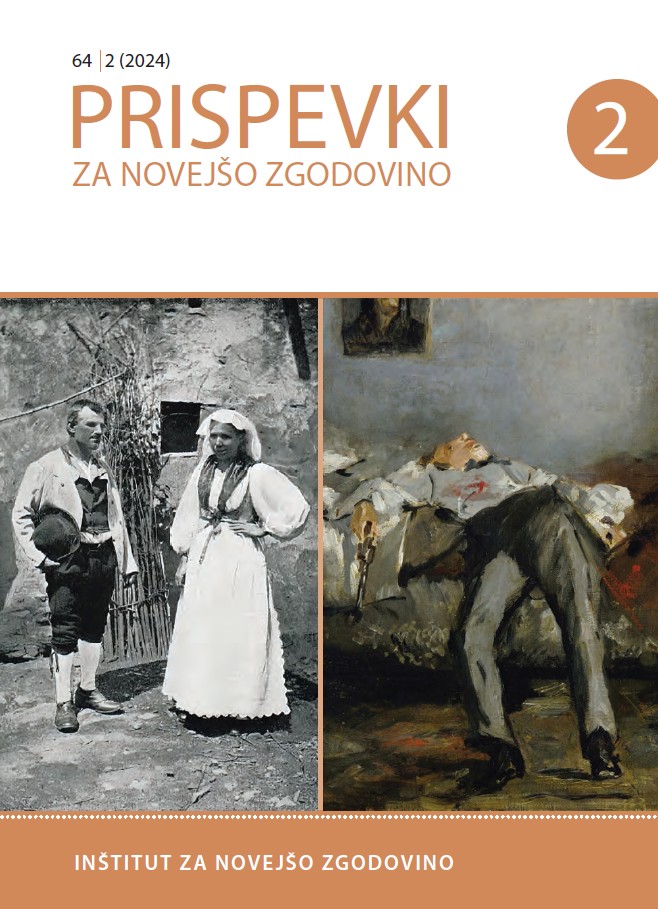Suicide as Historical Phenomenon: Introduction to the Thematic Section
Keywords:
IntroductionAbstract
There are probably not many things that mark people more than the fact that they are transient. The division between life and death, between Eros and Thanatos, is as old as humanity itself, and while dying and death are exceedingly common themes, suicide has nevertheless been given a particular place and has had different connotations in various cultural contexts over the centuries. The thematic section at hand presents the studies from the project titled Sin, shame, symptom: suicide and its perceptions in Slovenia (1850–2000), financed by the Slovenian Research and Innovation Agency (research core funding No. J6-3123), covering the period from the second half of the 19th century to the modern period, when suicide victims became viewed as patients and were no longer perceived as criminals and sinners. In the period starting with the formal decriminalisation of suicide and coinciding with the birth of modern statistics – which, for the first time in history, calculated statistically verifiable, demonstrable, and, within specific environments, constant rates of suicide – the perception of suicide changed. No longer deemed a sin, a rebellion against the Creator, and a criminal act, it initially became regarded as “the most intimate act” until it started to primarily represent a reflection of crises and societal circumstances. Suicide was perceived as an issue at the intersection of the sacred and the secular, of the philosophical, sociological, and medical spheres, of the urban and rural domains, while lawyers, doctors, sociologists, theologians, and others dealt with it from their perspectives.
Downloads
Published
Issue
Section
License
Copyright (c) 2024 Meta Remec

This work is licensed under a Creative Commons Attribution 4.0 International License.
Authors who publish with this journal agree to the following terms:
- Authors retain copyright and grant the journal right of first publication with the work simultaneously licensed under a Creative Commons Attribution License that allows others to share the work with an acknowledgement of the work's authorship and initial publication in this journal.
- Authors are able to enter into separate, additional contractual arrangements for the non-exclusive distribution of the journal's published version of the work (e.g., post it to an institutional repository or publish it in a book), with an acknowledgement of its initial publication in this journal.
- Authors are permitted and encouraged to post their work online (e.g., in institutional repositories or on their website) prior to and during the submission process, as it can lead to productive exchanges, as well as earlier and greater citation of published work (See The Effect of Open Access).


